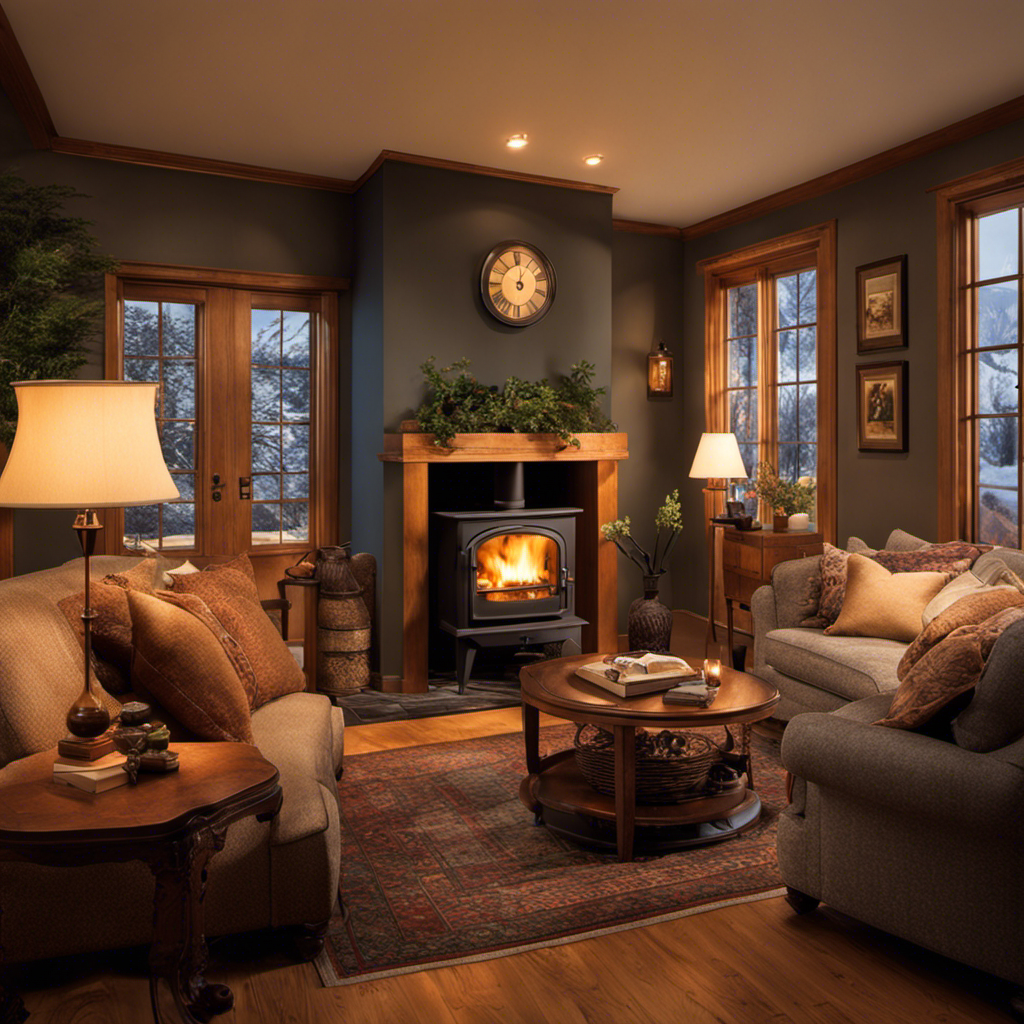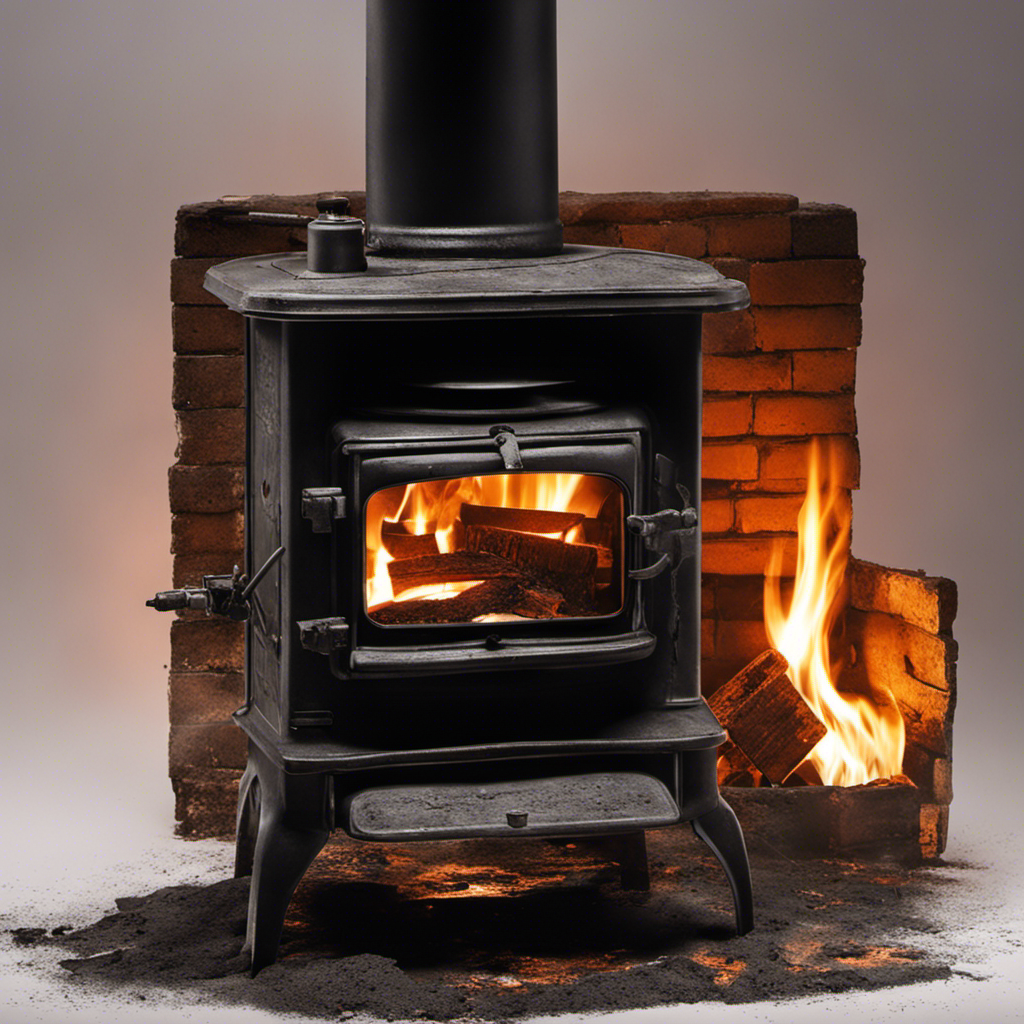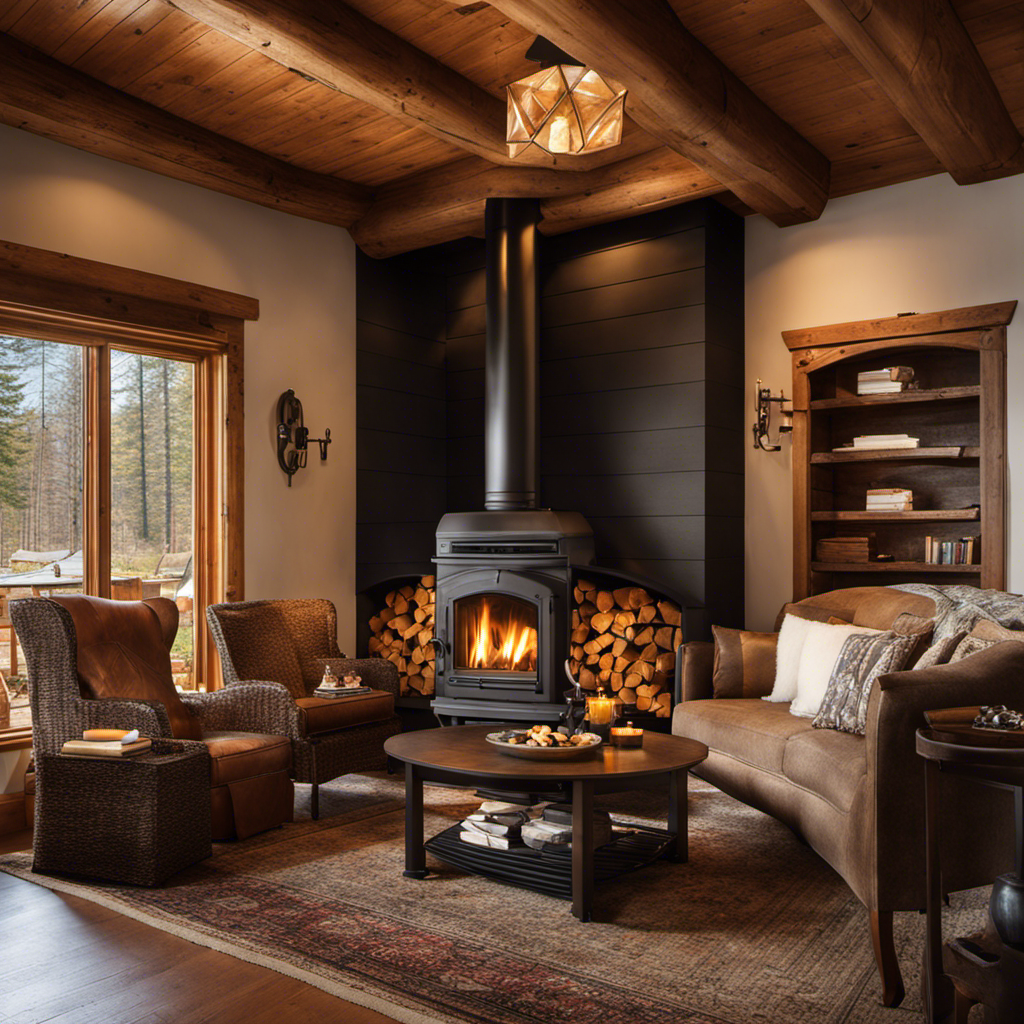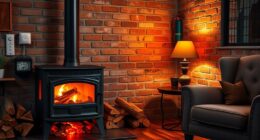Congratulations on acquiring a small wood stove! Curious about how long it will keep you warm and toasty? Don’t worry, my friend, as I have all the information you need. Ready to unravel the mystery? Let’s dive in together!
In this article, we’ll dive into the nitty-gritty details of wood type, stove size, ventilation, insulation, and even external factors like weather and climate.
By the time we’re done, you’ll be a bonafide expert on how to keep that fire burning for as long as you need it.
Let’s get started!
Key Takeaways
- The moisture content of the firewood affects combustion efficiency, with dry firewood producing longer burns.
- The size and capacity of the stove determine heat production, with larger capacity allowing for longer heating durations.
- Proper ventilation and airflow are crucial for optimal combustion and heat distribution.
- Insulation and heat retention play a significant role in maximizing heat efficiency and longer heating periods.
Wood Type and Quality
I can tell the difference in burn time based on the wood type and quality. When it comes to heating my small wood stove, the moisture content of the firewood plays a crucial role in combustion efficiency.
Wood with high moisture content will require more energy to burn off the excess water, resulting in a less efficient combustion process. This leads to shorter burn times and less heat output.
On the other hand, dry firewood with a low moisture content will ignite more easily and produce a longer, more sustained burn. It’s important to properly season the firewood by allowing it to dry for at least six months to achieve a moisture content of around 20%.
This ensures optimal combustion efficiency and maximizes the longevity of the firewood.
Stove Size and Capacity
Although the size of the stove is important, it’s the capacity that ultimately determines how much heat it can produce. When it comes to stove efficiency and heating duration, the capacity plays a significant role.
The capacity of a wood stove refers to the amount of wood it can hold and burn at a time. A larger capacity allows for a longer heating duration, as more wood can be burned without needing constant refilling.
However, it’s essential to consider stove efficiency as well. A stove with high efficiency can extract more heat from the wood and distribute it evenly throughout the room. This means that even a smaller stove with high efficiency can provide a longer heating duration.
Therefore, when choosing a wood stove, considering both size and capacity, along with efficiency, is crucial for determining how long it will stay heated.
Ventilation and Airflow
The ventilation and airflow in a room greatly impact the effectiveness of a wood stove’s heating capabilities. Proper installation is crucial to ensure that the stove is able to draw in enough air for combustion and efficiently distribute the heat throughout the room. Here are some key points to consider:
-
Ventilation:
-
Ensure that the room has sufficient ventilation to allow fresh air to enter and stale air to exit.
-
Install vents or windows that can be opened to regulate airflow.
-
Airflow:
-
Position the wood stove in an area with good air circulation to maximize heat distribution.
-
Avoid blocking vents or placing furniture too close to the stove, as this can impede airflow.
Maintenance and cleaning are also important for maintaining optimal ventilation and airflow:
- Regularly clean the stove and chimney to prevent blockages and ensure proper airflow.
- Check and replace air filters as needed to maintain good ventilation.
Insulation and Heat Retention
An effective way to improve heat retention and energy efficiency in a room is by installing insulation in the walls and ceiling. Insulation acts as a barrier, preventing heat from escaping through the walls and ceiling and keeping the room warm for longer periods.
The key to maximizing energy efficiency is to ensure that the insulation is properly installed and maintained. Proper maintenance includes periodic checks for any gaps or openings in the insulation that may allow heat to escape. Additionally, it’s important to regularly clean and replace insulation if necessary to maintain its effectiveness.
External Factors: Weather and Climate
Living in a cold climate, I’ve to constantly adapt my heating methods to the external factor of weather in order to keep my small wood stove efficiently heated.
Seasonal variations play a significant role in the amount of heat my stove produces. During the winter months, when temperatures drop below freezing, I need to load the stove more frequently and adjust the airflow to maintain a steady temperature inside.
In contrast, during the milder spring and fall seasons, the stove requires less fuel and I can control the heat output with smaller adjustments.
Altitude effects also impact the efficiency of my wood stove. As I live at a higher altitude, the air pressure is lower, which can affect the combustion process. To compensate for this, I need to ensure proper airflow and adjust the damper accordingly.
Overall, understanding these external factors is essential for effectively heating my home with a small wood stove.
Frequently Asked Questions
Can I Leave a Small Wood Stove Unattended for Long Periods of Time?
Leaving a small wood stove unattended for long periods of time can pose serious safety concerns. It is important to monitor the stove regularly, ensuring proper ventilation and maintaining a safe distance from flammable materials.
How Often Do I Need to Clean My Small Wood Stove?
Cleaning frequency for a small wood stove depends on usage and type of wood burned. Regular maintenance is crucial to ensure optimal performance and safety. Here are some maintenance tips to keep your stove in top condition.
Can I Use a Small Wood Stove in a Mobile Home or Rv?
Using a small wood stove in an RV has its pros and cons. Maintenance is crucial for safety and efficiency. It provides cozy warmth and the charm of a real fire, but ventilation and space constraints must be considered.
Is It Safe to Install a Small Wood Stove in a Bedroom or Other Small Enclosed Space?
It is important to consider the safety of installing a small wood stove in a bedroom or small enclosed space. Proper ventilation requirements and wood stove efficiency must be met to ensure safe operation.
How Does the Cost of Heating With a Small Wood Stove Compare to Other Heating Methods?
Wood stove efficiency is a key factor when comparing heating costs. When considering the cost of heating with a small wood stove, it is important to take into account factors such as insulation, fuel prices, and the size of the space being heated.
Conclusion
In conclusion, the duration for which a small wood stove stays heated depends on various factors.
The type and quality of wood used, the size and capacity of the stove, proper ventilation and airflow, as well as insulation and heat retention all play a significant role.
Additionally, external factors such as weather and climate can impact the stove’s heating duration.
By considering these factors and ensuring optimal conditions, one can maximize the heat output and enjoy a cozy and warm environment for an extended period of time.
Growing up surrounded by the vast beauty of nature, Sierra was always drawn to the call of the wild. While others sought the comfort of the familiar, she ventured out, embracing the unpredictable and finding stories in the heartbeat of nature.
At the epicenter of every remarkable venture lies a dynamic team—a fusion of diverse talents, visions, and passions. The essence of Best Small Wood Stoves is crafted and refined by such a trio: Sierra, Logan, and Terra. Their collective expertise has transformed the platform into a leading authority on small wood stoves, radiating warmth and knowledge in equal measure.











